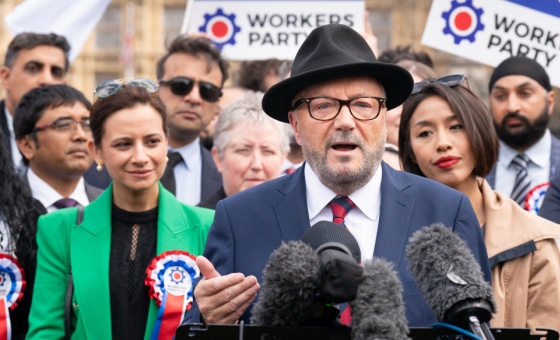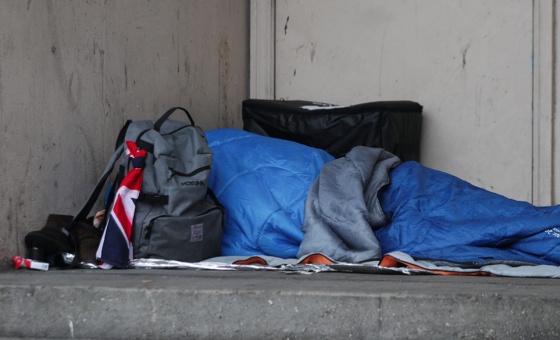This is the last article you can read this month
You can read more article this month
You can read more articles this month
Sorry your limit is up for this month
Reset on:
Please help support the Morning Star by subscribing here
ALTHOUGH the NHS hands over vast sums to independent mental health service providers, those who have lost loved ones or have been damaged by long periods of restrictive practices, often have to fight to be even acknowledged — let alone get real justice.
For those who have been in these units either as patients or staff, there’s a feeling of relief they have survived. But they also have a need to share their stories, to add further weight to the call to shut these expensive units down and end unsafe restrictive practices.
Steph had a dream of working in mental health, using her own personal experiences and in turn, helping those who are going through similar turmoil.
At the time she was applying for a post at the Priory, there hadn’t been the scrutiny of care in such units: “I applied to work there expecting that because they seemingly have such a good reputation that it must be a good place to work and somewhere that you can make a difference. I never expected to start in any job that treats vulnerable people so badly.”
In hindsight, the first red flag was the scant training she was given. Being dumped onto the wards with little preparation made Steph nervous, particularly as she felt the tension on the ward including “cabin fever” among the young patients. Added to this was a culture among the staff that was, at times, unhealthy and combative towards these young vulnerable patients.
It wasn’t long before Steph was asked for her help in restraining a patient. “It was with six other staff members, and it felt very unsafe particularly as I hadn’t received the Prevention and Management of Violence and Aggression training.”
In another unit in a different part of the country, 16-year-old Sam had been admitted. She hoped this admission would be able to help her deal with the trauma in her life but what she was confronted with was just how many patients were getting restrained as well as others openly self-harming.
When Sam refused to take a medication orally, she “was dragged through the corridor by multiple staff members, in front of all the other patients before being restrained, my jeans pulled down and a dose administered, by intramuscular injection.”
By now, Steph was also noticing a similar pattern, and despite having been asked to help in multiple restraints, she still hadn’t received the required training: “I tried to speak to other staff members or ward managers about my concern. They told me they didn’t have the capacity to offer the training at that time and that it was self-explanatory in what I had to do.
“When I pointed out things such as how the ward was going against their own guidelines on restraint, one ward manager simply laughed at me and said that ‘in the moment, documents don't matter’ and refused to discuss it any further.”
“Restraint is not just about physically restraining people,” the campaigning mental health charity Mind said in their report Mental Health Crisis Care: Physical Restraint in Crisis.
“It includes the use of medication to subdue patients, and the use of seclusion to confine and isolate someone on the ward. Abusive restraint can, however, take more subtle forms than these restrictive interventions.”
Alice, another 16-year-old admitted to a unit, experienced such subtle forms of interventions but felt the restrictive monitoring was counter-productive: “I received no substantial help. I was surrounded by chaos, and severe restriction within the environment — but despite this, I was still allowed to continue to restrict my food intake. The higher level of care was the restriction, but there was nothing therapeutic to help me, and stop me from becoming an inpatient again.”
On the staff side, Steph could also see how these restrictions weren’t working for patients, such as segregating patients who were put into bare isolation rooms: “There were occasions when I was told off by senior members of staff for attempting to talk to people in seclusion — yet they were being kept in there for days, sometimes weeks on end, and all they needed was to talk to someone.”
Sam remembers the abusive practices that led to her being physically injured as well as experiencing dehumanising behaviour from staff.
“There was one night I was stripped of my clothes apart from my bra on my top half as I was too unsafe in regular clothing. I had no blanket either. At this point, I was on 2:1 (two staff members to one patient). I was told I would only have female staff watch me that night, but I woke up in the night to see two males on my 2:1 observation.”
One of the most lasting forms of restraint was through the medication she was given. Within weeks of entering the unit, she was prescribed heavy-duty anti-psychotics with the consultant, in a frenetic manner, chopping and changing the drugs she was on, in what Tom Main in his seminal article The Ailment named a “therapeutic frenzy.”
“I felt very pressured to ‘make the medication work’ and when it didn’t it seemed as if it was my fault,” Sam said. “I was made to feel as if I was a hopeless case and was beyond help.”
The drug that did work in the end, Olanzapine, came with severe side effects: “It led to a huge increase in my appetite and my body weight literally doubled. As someone who has a history of restrictive eating disorders, this was the worst thing that could've happened to me.
“I still greatly struggle with my body and the weight gain has made me feel so low. I wasn’t warned of these side effects before being prescribed Olanzapine. Furthermore, the Olanzapine led to extreme sedation. I would sleep for up 20 hours a night and still feel tired when I woke up.”
Alice also clearly remembers the powerful anti-psychotic medication. She was often on multiple drugs, and this had a drastic impact on how it made her feel: “It just muted me. Everything slowed down, and I didn’t feel like myself.”
A recent study from the University of Manchester has shown that the number of children and young people in England prescribed these heavy-duty anti-psychotics has nearly doubled in two decades. Although the National Institute for Health and Care Excellence approves the use of these drugs for children with psychosis or severely aggressive behaviour, the research shows they are being used far more widely, with most prescriptions used for children with Autism.
Keir Harding, clinical lead at Beam Consultancy, says: “There has never been a public conversation as to whether we should privatise the inpatient mental health care of young people, yet the private sector now provides most of these services. When people are sent out of sight and out of mind, it’s much easier for unthinkable things to happen.
“We need to ask some difficult questions. How many times do men restrain and remove the clothes of girls who have lived through trauma before they begin to feel safe? To what extent does medication cure illness or provide sleepy patients who are less demanding?
“We need to radically rethink about the value of detaining people because we ignore the patients who describe the hell of the restriction they live through and when too often they die, the conclusion is that the restriction wasn’t high enough.”
Some names have been changed to protect the identity of sources.
Keir Harding is the clinical lead at Beamconsultancy.co.uk and can be found on Twitter as @Keirwales.
R.F. Hunt is a freelance journalist and an author.











